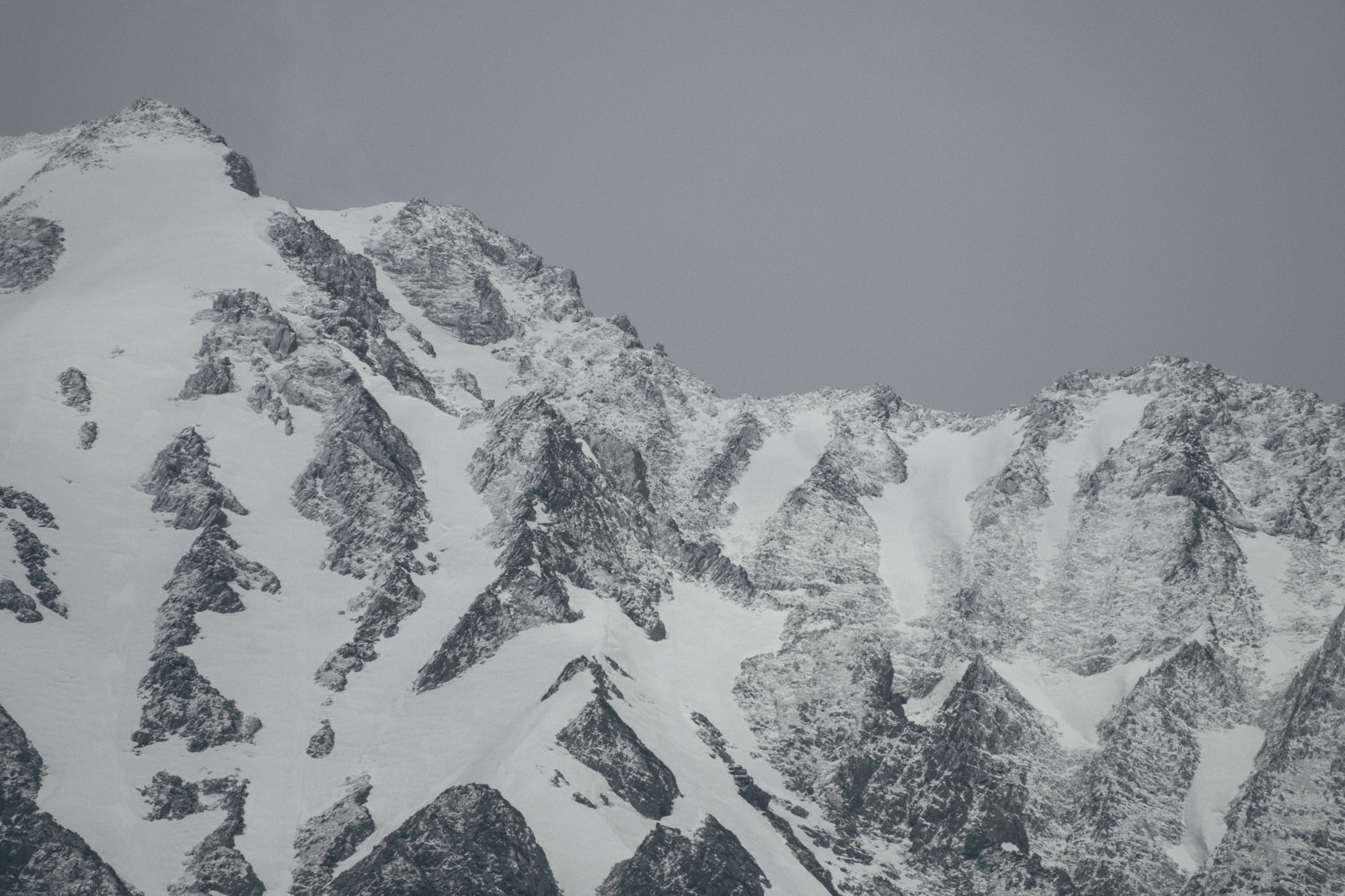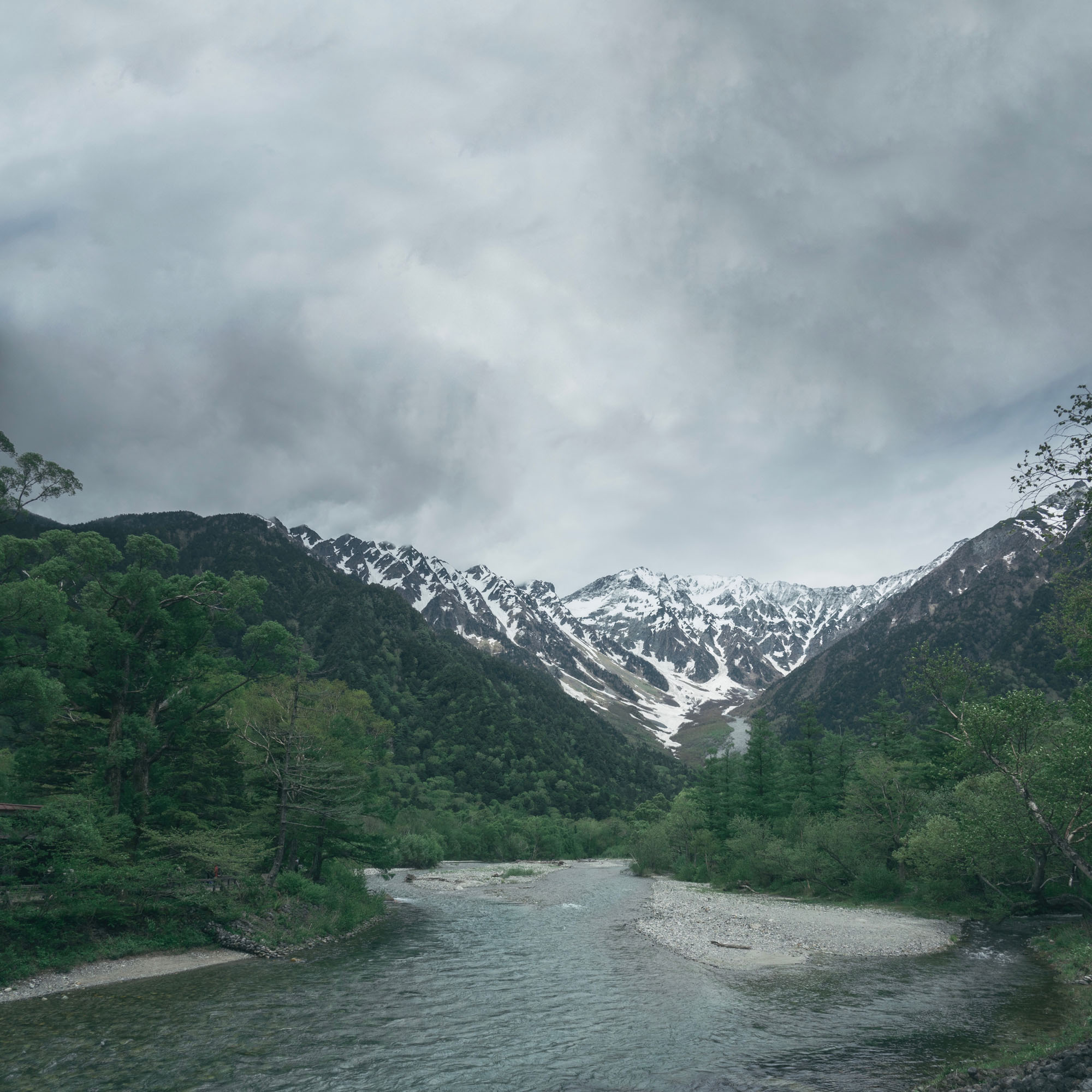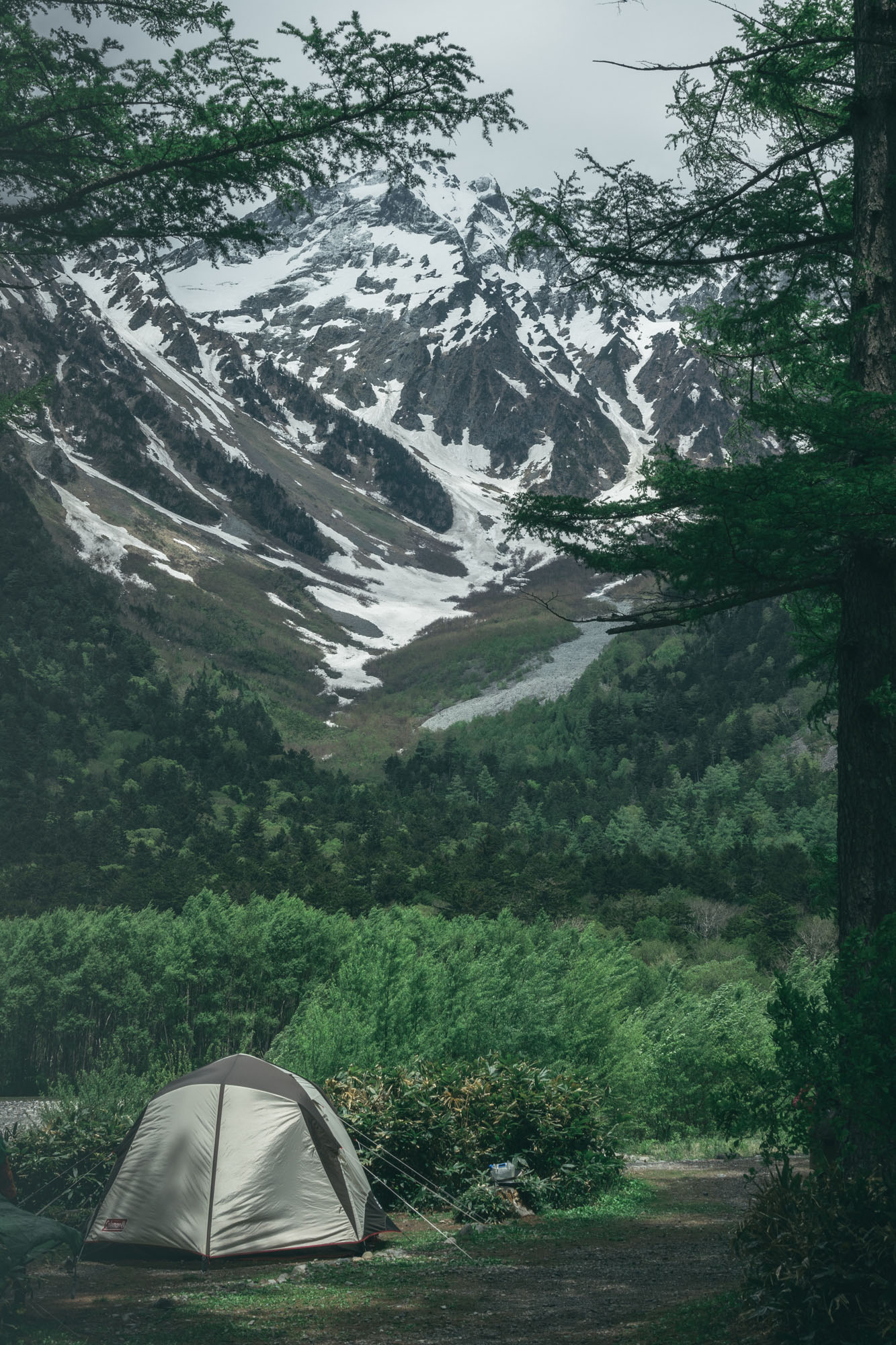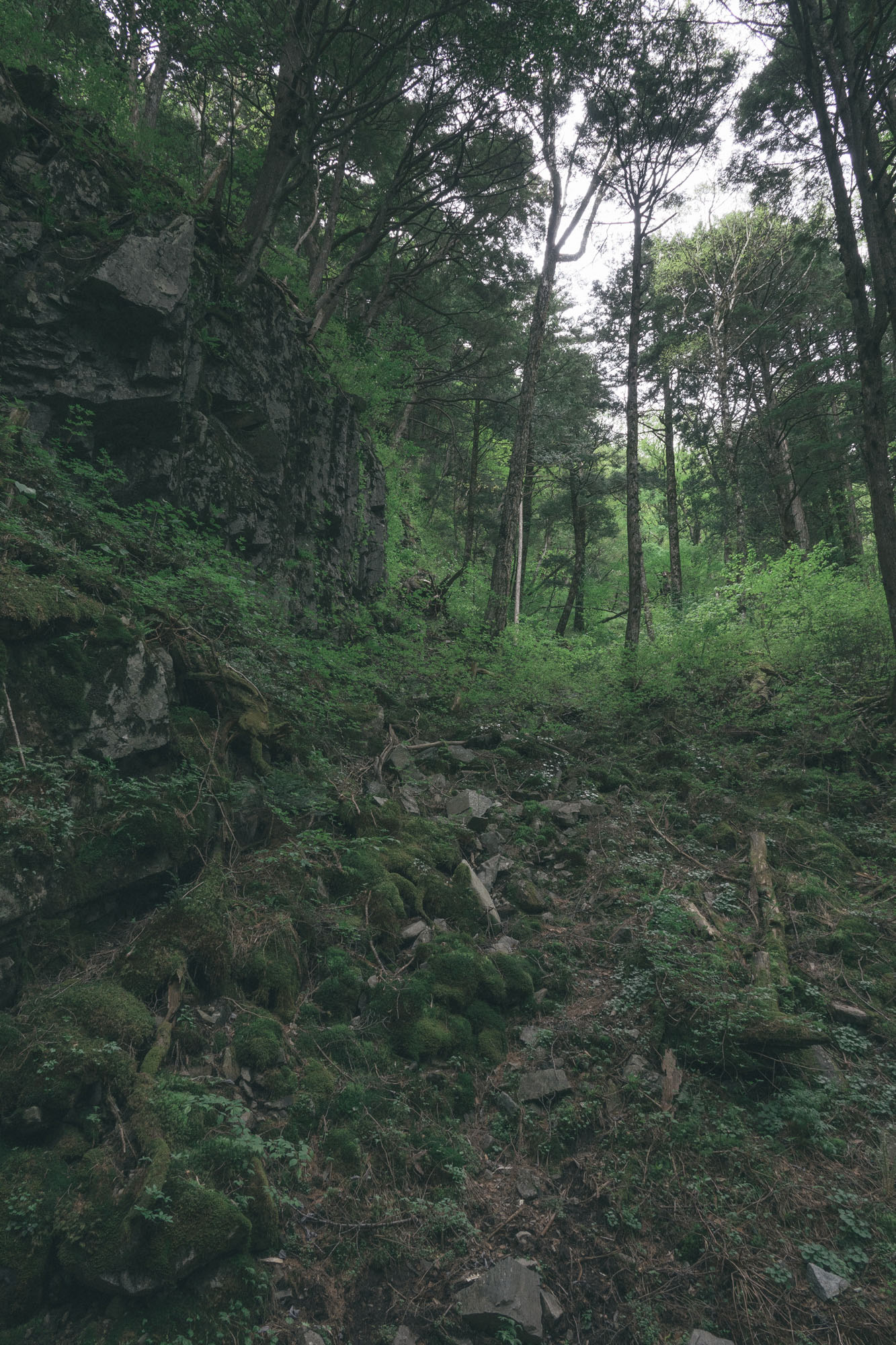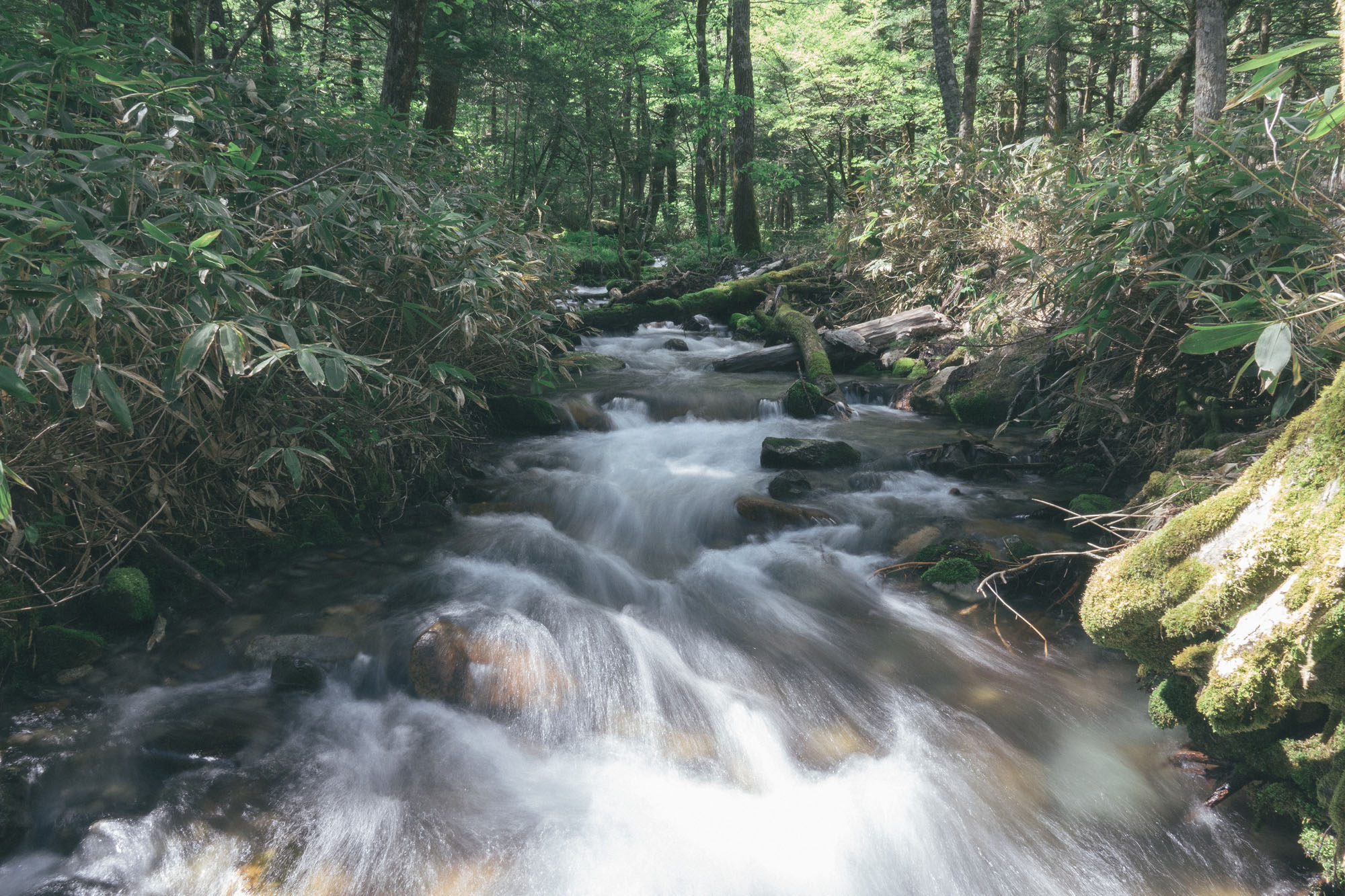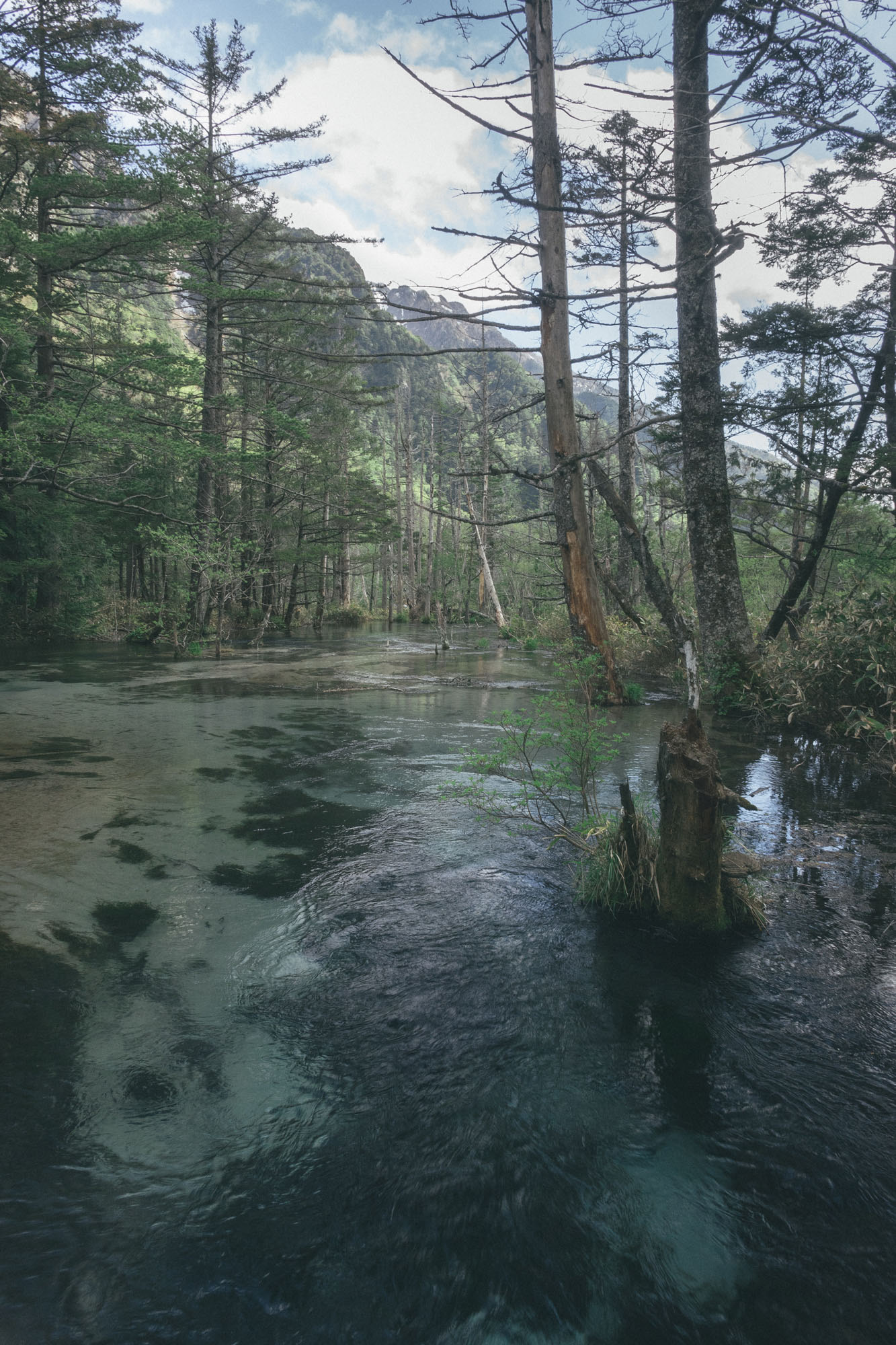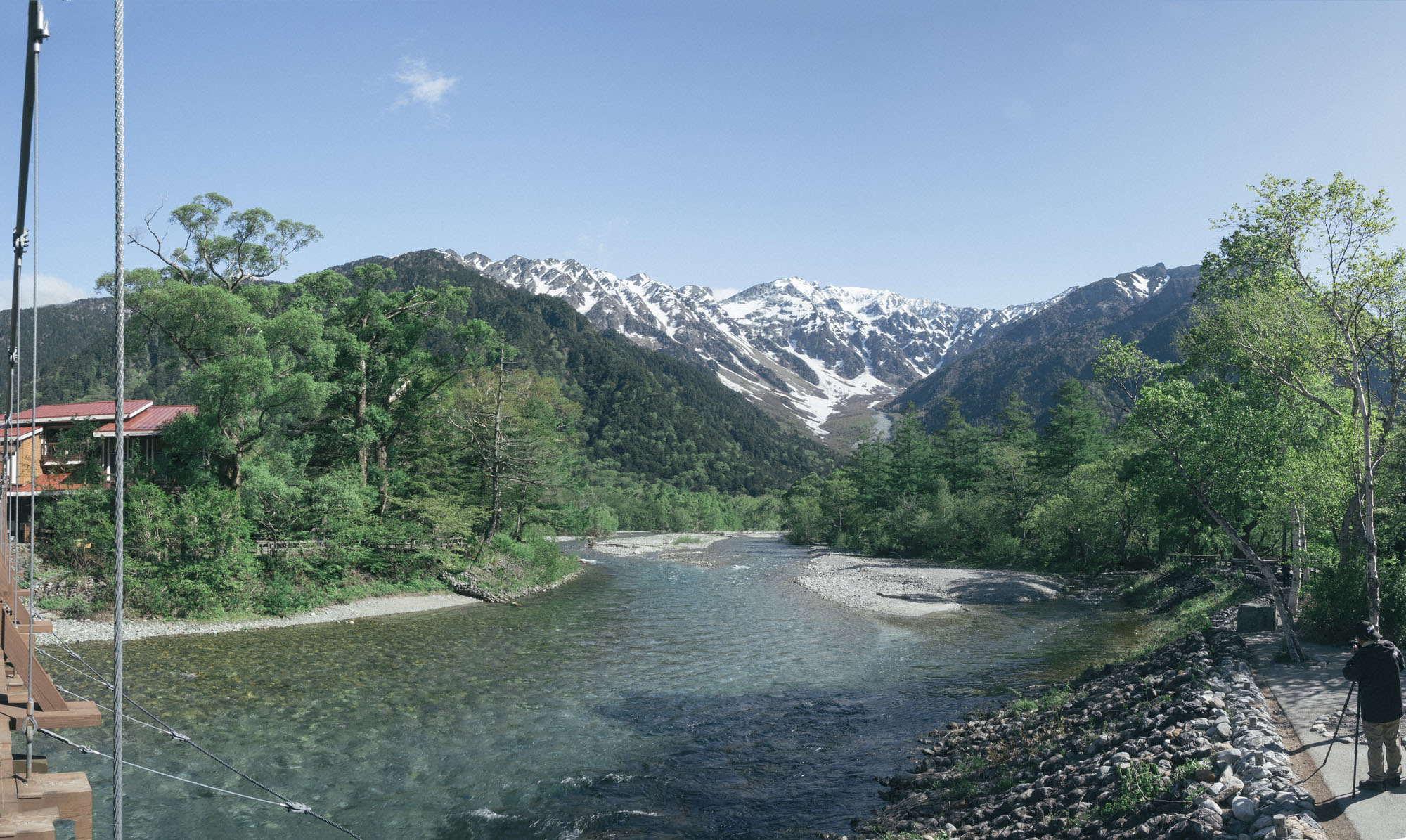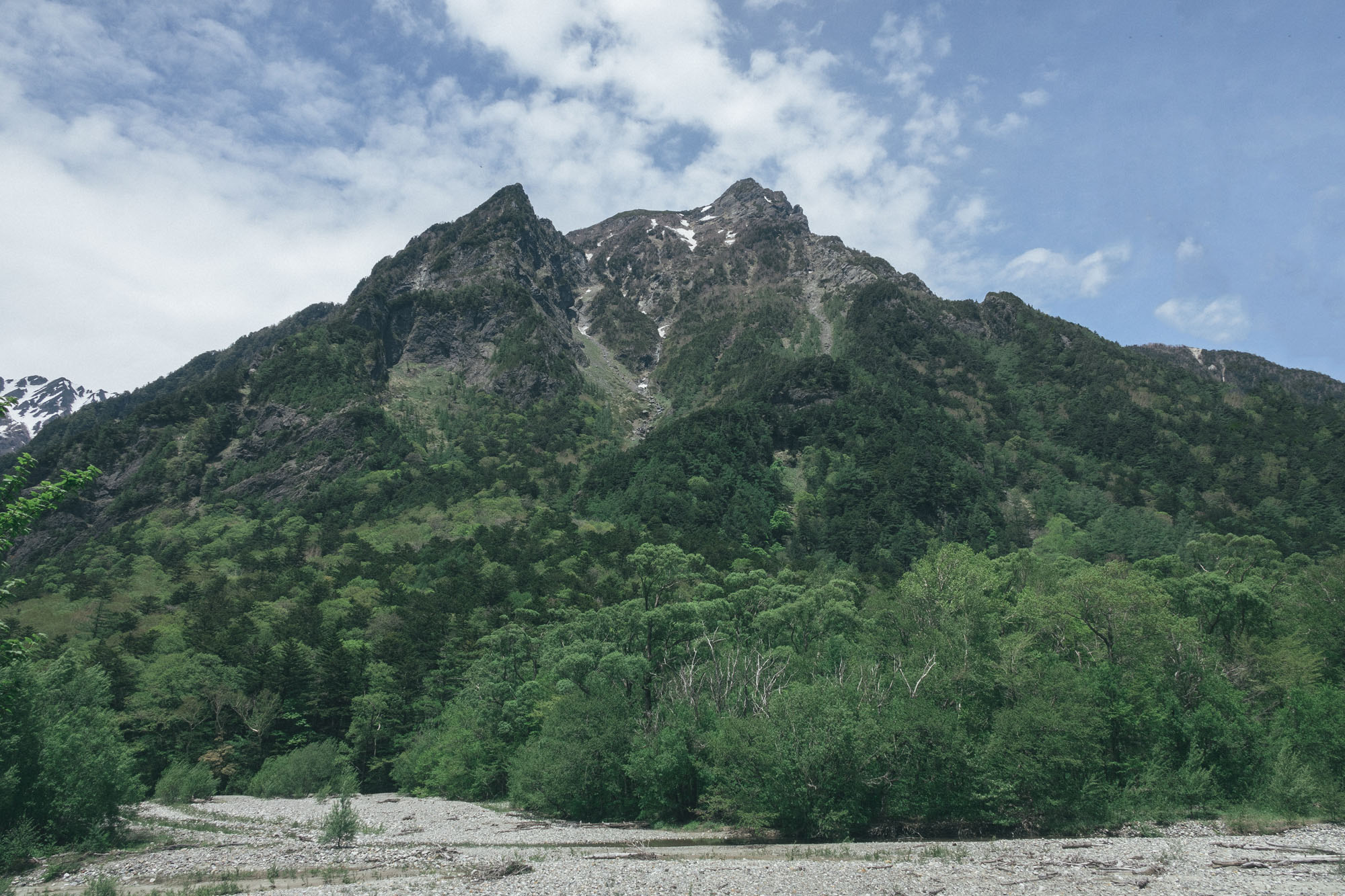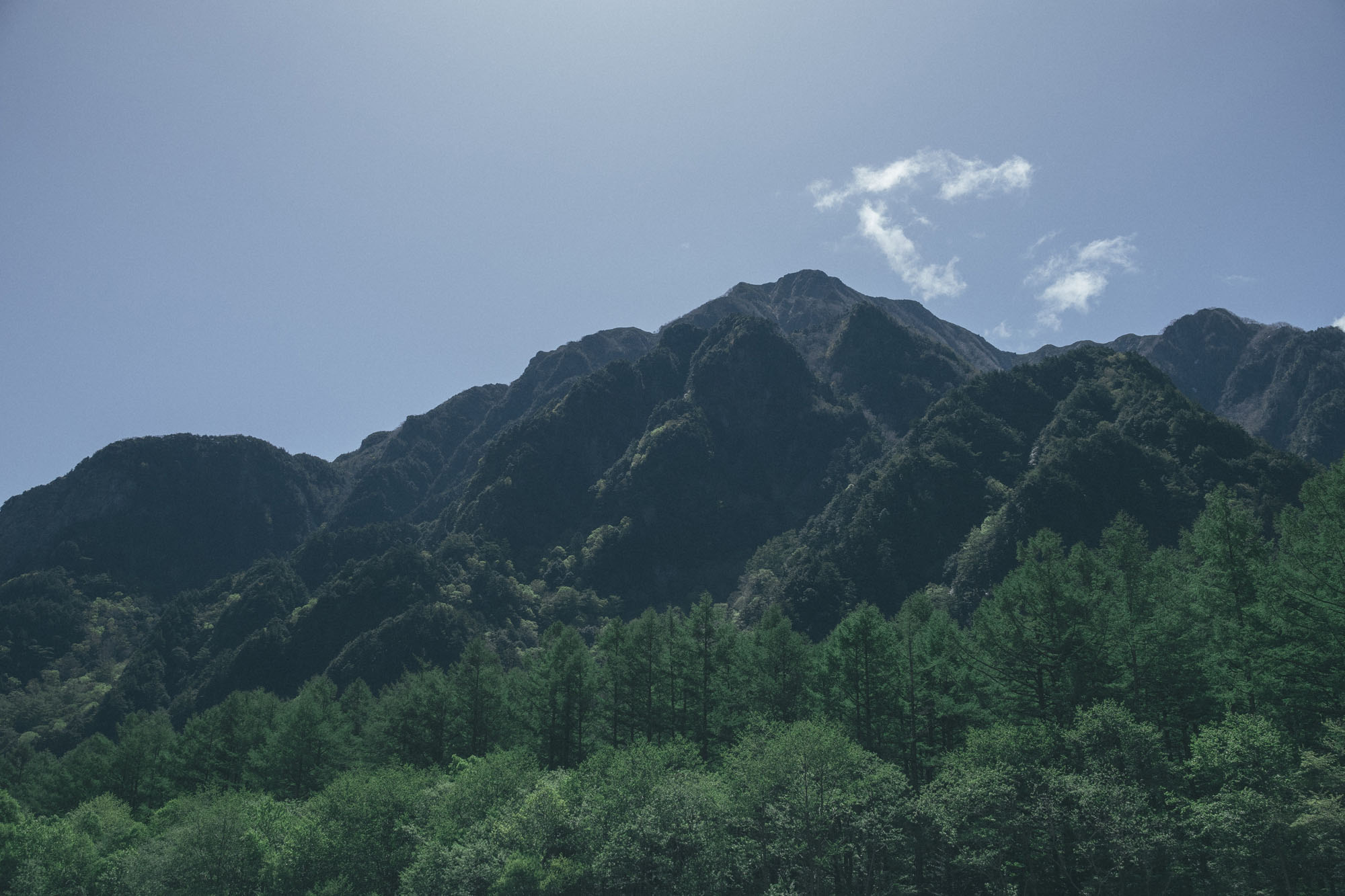Overnight hiking in Kamikochi, Nagano with only our Sony RX10M3 and iPhone 7+ to capture the scenery.
Even after giving up our Canon rig and going all in on the mirrorless Sony A7II series (more on that in a future post) we still found ourselves struggling to find the right balance of portability and funcationality when traveling. We’ve long dallied with full framed fixed lens cameras such as the gorgeous Leica Q (which accompanied us on this trip to Nikko) and the Sony RX-1 but ultimately gave up on both due to the limitations imposed by their fixed lens nature.
The limitations of a fixed-lens become particuarly apparent on outdoor hiking and camping trips in which we often find ourselves wanting for both a wide-angle and a telephoto lens length. It’s possible to capture such trips with either of these cameras of course, but at the end of the day, you get the shots that you get, and there are a bunch of shots you’re just not going to get. One basically gets a single angle of view per location and after a while it’s clear that you shot the entire thing at the same 28mm/35mm perspective.
Having moved to the mirrorless Sony A7II series, we found ourselves considering a load out for a recent upcoming hiking trip to Kamikochi in Nagano prefecture. Even though the body itself is light, as is the FE Zeiss 16-35 f/4 (relative to the Canon equivalents) once you start adding in the Sony 70-200 (whether the f/4 but especially the f/2.8) the entire kit grows exponentially in terms of size and weight - mirrorless cameras not being immune to the laws of physics - and it became impractical to travel for a three day trip with just a single bag as I had originally intended, especially since I need to carry all my hiking gear as well.
So what to do? Giving up on the telephoto and going with only the wide-angle is one option and with some moderate zoom it would give more flexibility than the rigid fixed lens full frames we’d toyed with in the past. But Kamikochi has some excellent mountains and it would be a shame not to be able to capture them. We considered bringing along our everyday carry, the excellent Sony RX-1000m4 which would provide some zoom in the 24-70mm 35mm equivalent range and add virtually no weight or space to the pack, but ultimately that wasn’t going to get us the reach we wanted and there were likely few things we’d want to shoot in that 35mm-70mm area of coverage that the RX100 provided over the Zeiss.
Upon further reflection however, we started to think on the excellent results that we’d seen out of the tiny 1” sensor in the RX100m4 in the past - one of the reasons we switched over fully to Sony was their excellent sensor technology - and how satisfied we’d been with it. It’s really hard to understate the incredibly leaps that we’ve seen out of the 1” sensors in recent years - there are still many cases where full frame is a superior solution but if you’re not going to be shooting for extreme background blue or in low light conditions, in many cases a 1” sensor camera will do great by you.
The 1” sensor also carries with it some advantages - thanks to the laws of physics it’s much easier to get relatively wide zoom ranges1 in small packages (hence the relatively bright aperture and useful 24-70mm2 zoom in teeny tiny RX100m4). This fact hasn’t been lost on camera manufacuturers and forms the basis for so-called “bridge cameras” - mid-sized fixed lens mirrorless cameras with a twist - most of them come with insane zoom ranges.
What’s insane? In the case of the Sony RX10m3, it comes with a jaw-dropping 24mm - 600mm f/2.4-43 in a package that’s chunky, but still smaller than most entry level DSLRs, let alone an A7II + 35-16mm + 70-200mm lens set up. It’s lightweight, offers covers the range from decently wide-angle to ridiculously telephoto and does so without any fussy lens swapping. Given our good results with other Sony 1” sensors, we decided to give it a try and bring this as the only camera with us on our trip - the other selling point is that it could be thrown in our pack without much care or taking up too much space.
The other part of the equation was how to process the photos that we took during the trip. Bringing a laptop was out of the question due to our already bulging pack and relatively dearth of powering options. We decided to go all with our lightweight approach and bring only our phone with the Apple lightening to SD card reader and Lightroom Mobile to do some quick processing of RAWs whilst out in the field.
 Sony DSC-RX10M3 (Zeiss Vario-Sonnar T* 24-600mm f/2.4-4.0)
Sony DSC-RX10M3 (Zeiss Vario-Sonnar T* 24-600mm f/2.4-4.0)
We’ve already touched up on the RAW processing abilities of Lightroom Mobile on an iPad in the past. The iPhone version is basically identical spec-wise and with some massaging, it is entirely possible to produce images that we were relatively satisfied with in post. We wouldn’t want to edit an entire photoshoot with this, but for some in-the-field edits for a short 2 day trip, it proved to be a suitable ultra-lightweight solution, provided one can put up with the agonisingly slow iOS RAW import speeds.
 Lightroom Mobile + iPhone 7 Plus
Lightroom Mobile + iPhone 7 Plus
Overall, there was a lot to like about this setup.
For the RX10m3, it was incredibly liberating not to have to worry about constantly lugging around and switching lenses. The range was insanely useful - the telephoto end was actually sometimes too much and we often only found ourselves using it to about half its fully potential, but it was still great to have the reach when it was needed. The wide angle end was also quite useful though there were a few times when we found ourselves wishing to have a few more mm extra of width - but not enough that we’d want to lug out an extra camera and lens for that.
The compact, all-in-one nature of the RX10m3 made it very easy to throw in the pack without protection (we cushioned it with an outer layer of clothing near the top of the pack). It’s dense and not exactly lightweight, but it’s robust and we never felt like we needed to baby it like we would more expensive cameras.
Most importantly, the image quality, as is readily apparent from this post, was more than good enough for our needs - the RAW files handled readily in post just like any other Sony .ARW files (though pushing the darks quickly gives rise to banding and noise much more quickly than files out of the bigger mirrorless offerings) and we continue to be amazed at the quality we could get out of such a tiny sensor.
Finally, we were unexpectedly impressed with some of the ancillary features of the camera as well. The image stabilisation (at wider angles at least) worked much better than expected and allowed us long enough exposures to get motion blur from flowing rivers while handholding the camera, and the lens itself showed relatively little chromatic abberation, fringing and moderate - and easily correctable levels of distortion at both ends.
Of course, not everything was perfect with the RX10m3. The biggest and most noticeable limitation we ran into was that even with the built-in image stabilisation and fast shutter speeds, shooting hand held at the telephoto 600mm produces almost unavoidable shake in the final images that are visible when zoomed up to 100%. Now 600mm is often too much zoom so often we could reduce the shake by shooting somewhat shorter (but still telephoto) ranges where the IS helped out more. Coupled with sharpening and size reduction in post processing to normal web-viewing sizes, the subtle camera shake becomes generally imperceptible.
And while in general we were impressed with the performance of the 1” sensor, we did sometimes find ourselvees wanting for 1~2 more stops of dynamic range to capture the bright skies with darker mountains in some shots - the sky is unavoidably blown out in some shots and there were limits to how much we could underexpose a given shot to recover in post as banding and noise becomes much more readily apparent when recovering darks in files from the RX10m3 versus those from a larger full-frame offering.
Finally, certain limitations in design and handling start to show themsleves over time.4 The camera is, as mentioned, heavy and dense and over the course of several hours, you will definitely notice its weight - it’s not going to be lighter than carrying a small DSLR (thought still better than carrying two lenses + a body, mirrorless or not). The RX10m3 is also slower than its full frame bretheren - slow to zoom (even with the “fast zoom” option enabled), noticeably slow to lock focus in many cases at the telephoto end, and slightly slower when trying to adjust menus and review images, though in this case it performs better than say, the Sony a7rII and its gigantic files.
In the end though, the benefits of the setup, at least for this trip, far outweighed the downsides and we’re definitely going to repeat the experiment in our next camping/hiking excursion. It remains to be seen if this same setup would work for more general travel photography (we didn’t push the system towards trying to capture any portraits of people which is a large part of most travel phtotography) but for general usefulness and convenience when hiking in the outdoors, this may be as close to our ideal system as we’ve found yet.
-
In “35mm equivalent terms.” One needs to take into account the focal length multipliers for such small sensors in order to arrive at the equivalent range in “full frame” terms. There is no such thing as a free lunch however and there remain important caveats to keep in mind when discussing equivalence. ↩
-
35mm equivalent ↩
-
35mm equivalent ↩
-
Not mentioned in these limitations is of course, the entire myriad of compromises universal to the entire Sony camera line - obscure, user-hostile byzantine menus, and fidgety, overloaded physical controls (we’ve lost count of how many times we accidentally changed the AF focus mode instead of moving the AF point like we intended to), and just general sense of operating an interface as opposed to taking a photo. But there’s little merit to complaining about this - it’s just part and parcel of the Sony experience, and if you want all the good they have to offer (incredible sensor technology, innovative design and revolutionary technology) it’s something one needs to accept. ↩


